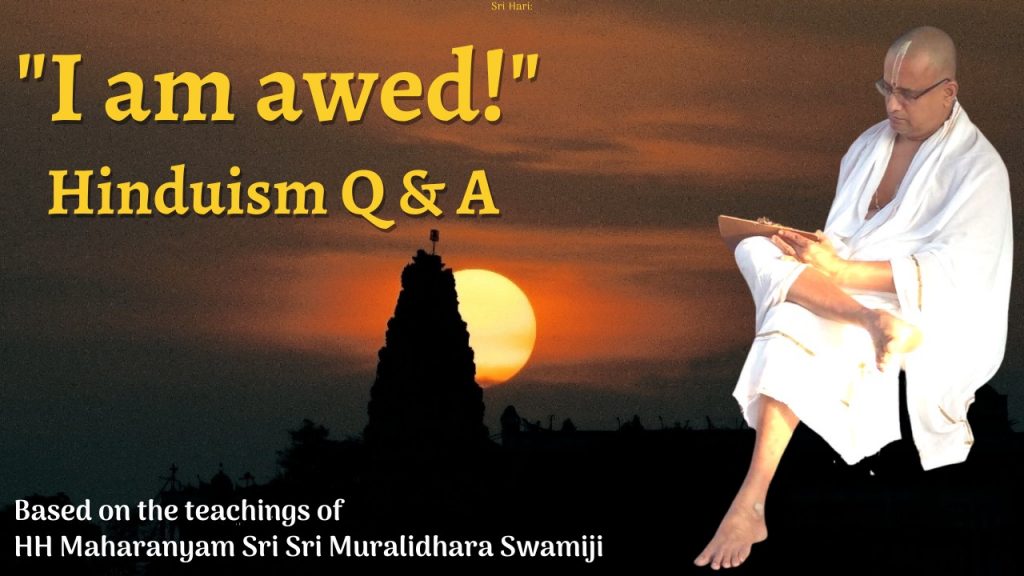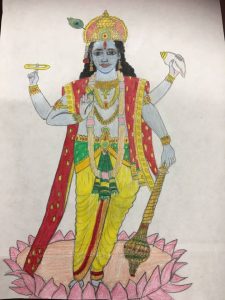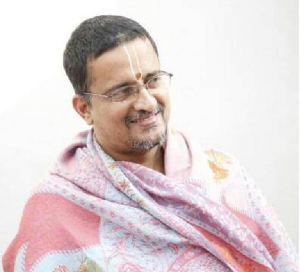Some things around us, and events that happen to us clue us in now and then on the mysteries and secrets of life. We often take them for granted and ignore the clues, but a deeper look into certain obvious natural phenomena helps in making headway into unraveling the answers to more serious questions in life. One such event is sleep.
Sleep typically has 2 vivid stages that we all are very familiar with – the dream state and the dreamless state of deep sleep. When asleep, we know well that we are sleeping on our beds, yet we find ourselves being chased by that ten headed monster in a dream, don’t we? Ever wondered how we can be in both places?
 The Upanishads explain this by breaking us down into 5 koshas (layers) – Annamaya (body), Pranamaya (breath), Manomaya (mind), Vijnanamaya (intellect) and Anandamaya (Self or Atman) koshas. In the waking state all the layers work actively with each other, but while asleep and in dream state, only the body and the Self are present in this world. The other 3 koshas (breath, mind and intellect) travel to another plane and ‘experience’ events that we term as dream. Within the dream, everything appears real because that very mind which created the fantasy also experiences the actions within. When the dream collapses, these 3 koshas come back and join the body and Self. Thus while asleep, we are there both in the dream and yet not there.
The Upanishads explain this by breaking us down into 5 koshas (layers) – Annamaya (body), Pranamaya (breath), Manomaya (mind), Vijnanamaya (intellect) and Anandamaya (Self or Atman) koshas. In the waking state all the layers work actively with each other, but while asleep and in dream state, only the body and the Self are present in this world. The other 3 koshas (breath, mind and intellect) travel to another plane and ‘experience’ events that we term as dream. Within the dream, everything appears real because that very mind which created the fantasy also experiences the actions within. When the dream collapses, these 3 koshas come back and join the body and Self. Thus while asleep, we are there both in the dream and yet not there.
In the state of dreamless deep sleep, we are at complete peace—not bothered about the trials and tribulations of our daily lives or disturbed by the fancies of a dream. Deep sleep is sheer bliss. This phase is experienced by all of us, at least for a short time, each day in sleep. Sometimes we wake up in the morning and feel like we had a great night’s sleep but we are unable to spot why, what or how that could have happened.
In deep sleep, the mind is at rest (absolutely no thoughts) but the ‘experience’ of great peace gets recorded in our memory. Thus we recall only the experience, but nothing to ascertain it to. This is because anything we can tangibly relate to is a reflection of the mind, which was absent in deep sleep. The very fact that we are unable to rationalize the reason for great sleep and reproduce it on will, shows that it was not the doing of the mind.
The phenomena of waking, dreaming and deep sleep are irrefutable. But wouldn’t it be a shame to simply take those daily routines for granted without probing into the mechanics of it? Sleep is not merely a fatigue-induced phase for bodily rest. It is a blessing—for it not only rejuvenates us physically, but actually comes closest to explaining the inexplicable mystery of life.
With pleasing dreams and dreadful nightmares, God clues us into the fact that so long as our thoughts (mind) run from pillar to post, we are bound to this cycle of joy and sorrow and of birth and death (samsara).
The state of deep sleep is that state when the mind is temporarily silenced and rid of thoughts (mano layam). Once awake, the mind immediately catches hold of the thoughts and springs into action. In contrast, a Jnani’s state is that when the mind is permanently silenced (mano nigraham)—that is the thoughts are completely annihilated. If the temporary silence in deep sleep can give us such peace, imagine the uninterrupted bliss of the Jnanis!
It is by design, and not by chance, that man spends an entire third of his life in sleep. Nor does it merely serve the purpose of rest. There’s more to sleep than meets the eye – even a shut one.
Sriram Ramanujam, Houston, TX
Illustration: Sripriya Sarathy, Charlotte, NC






